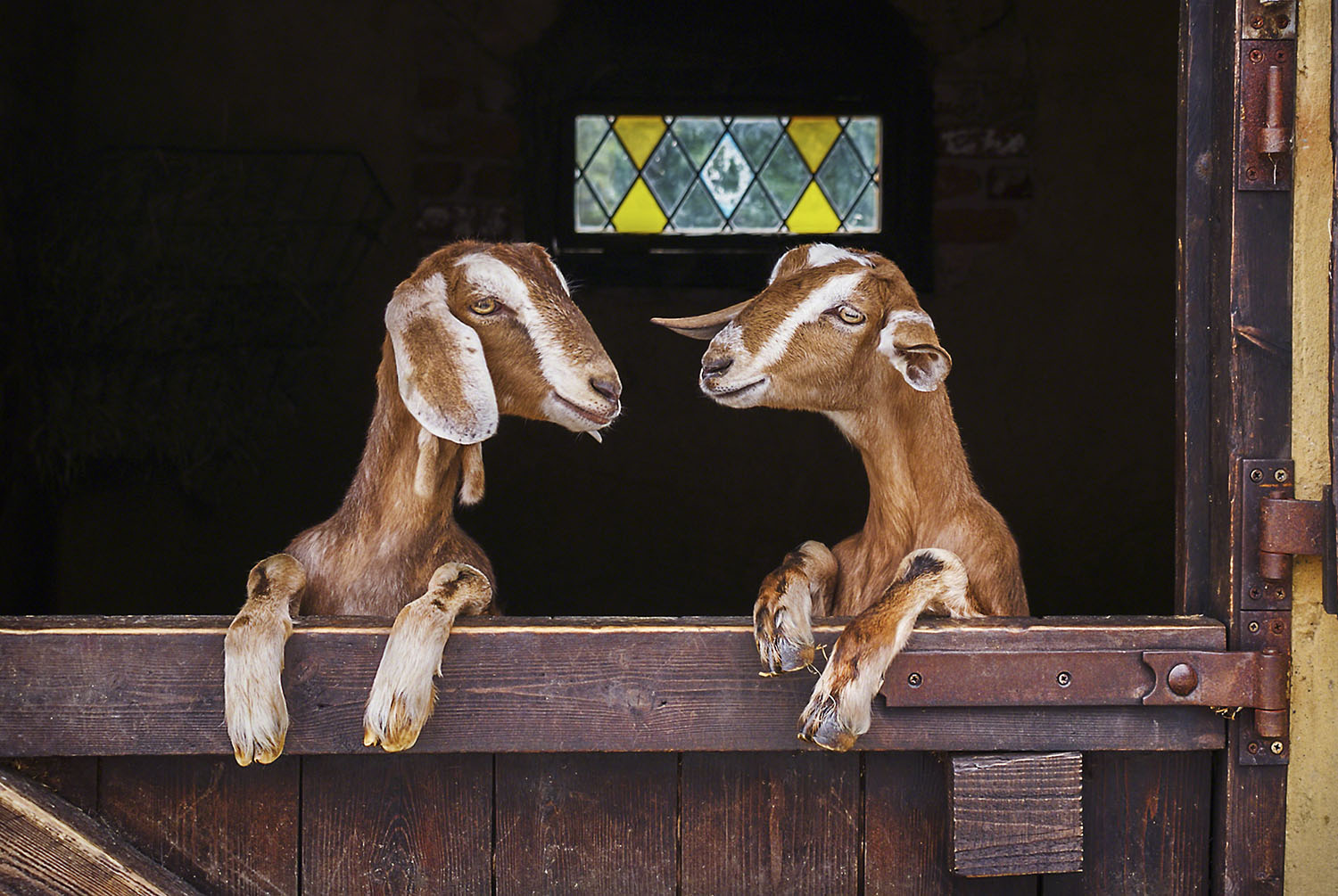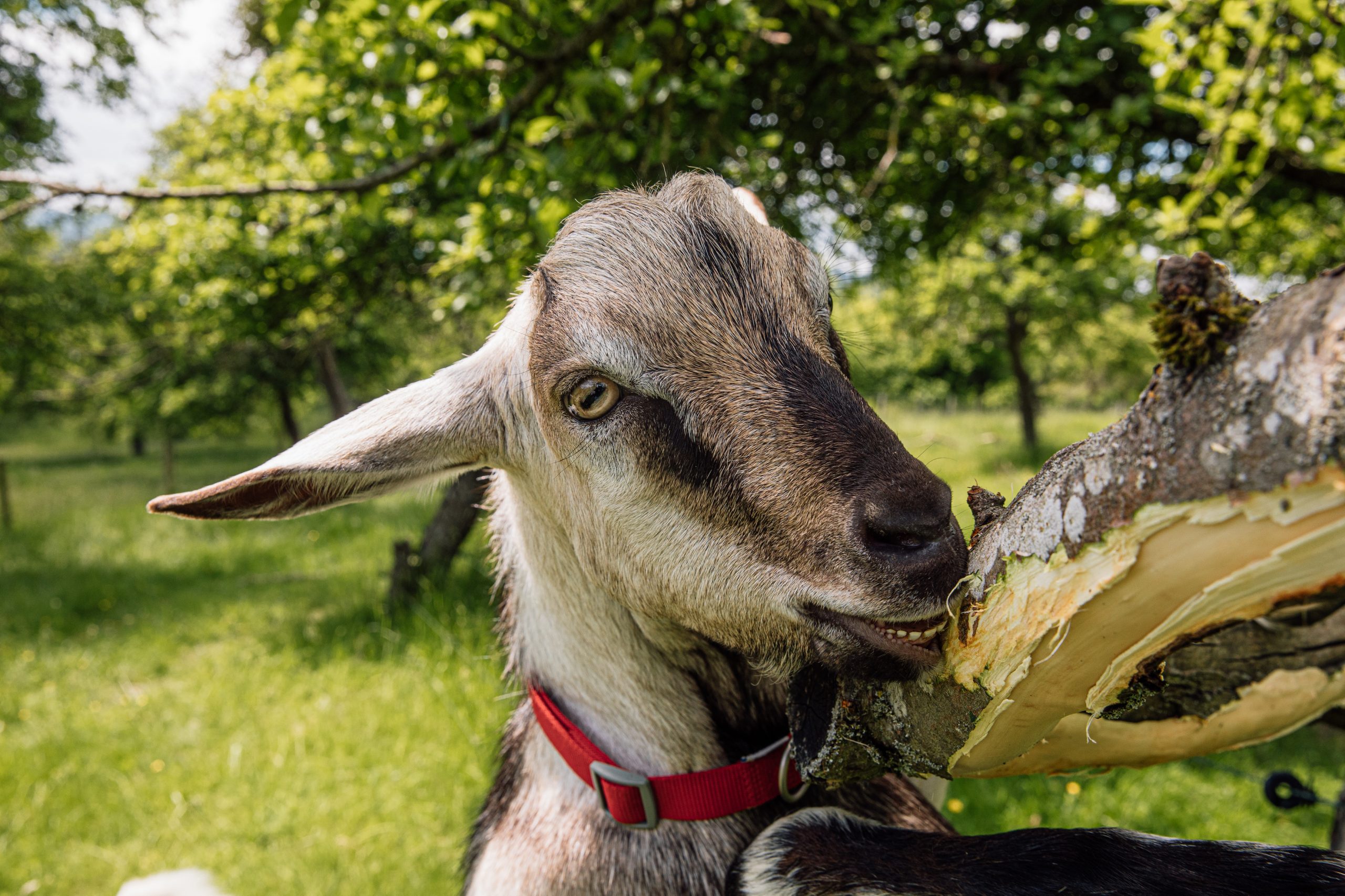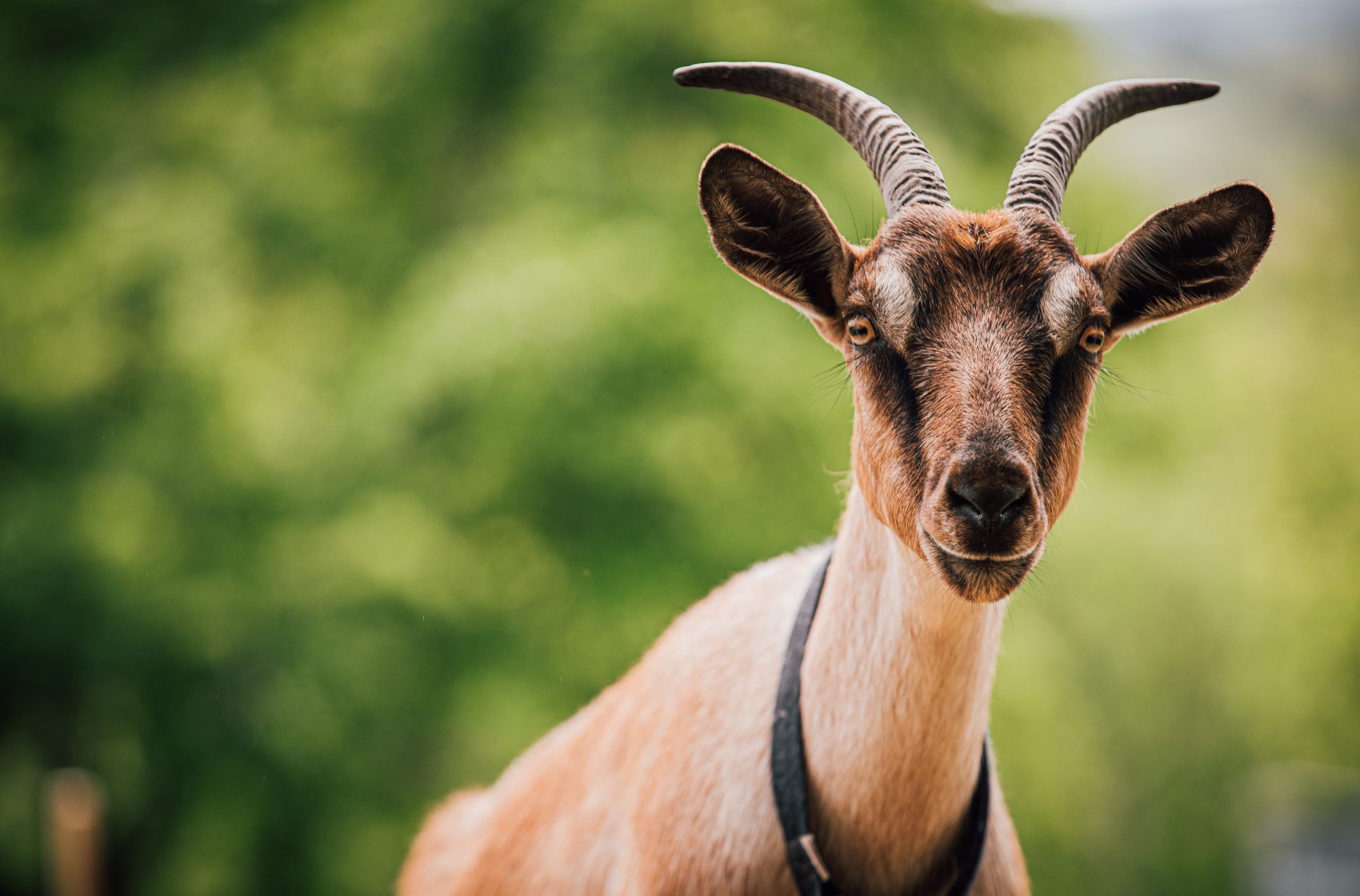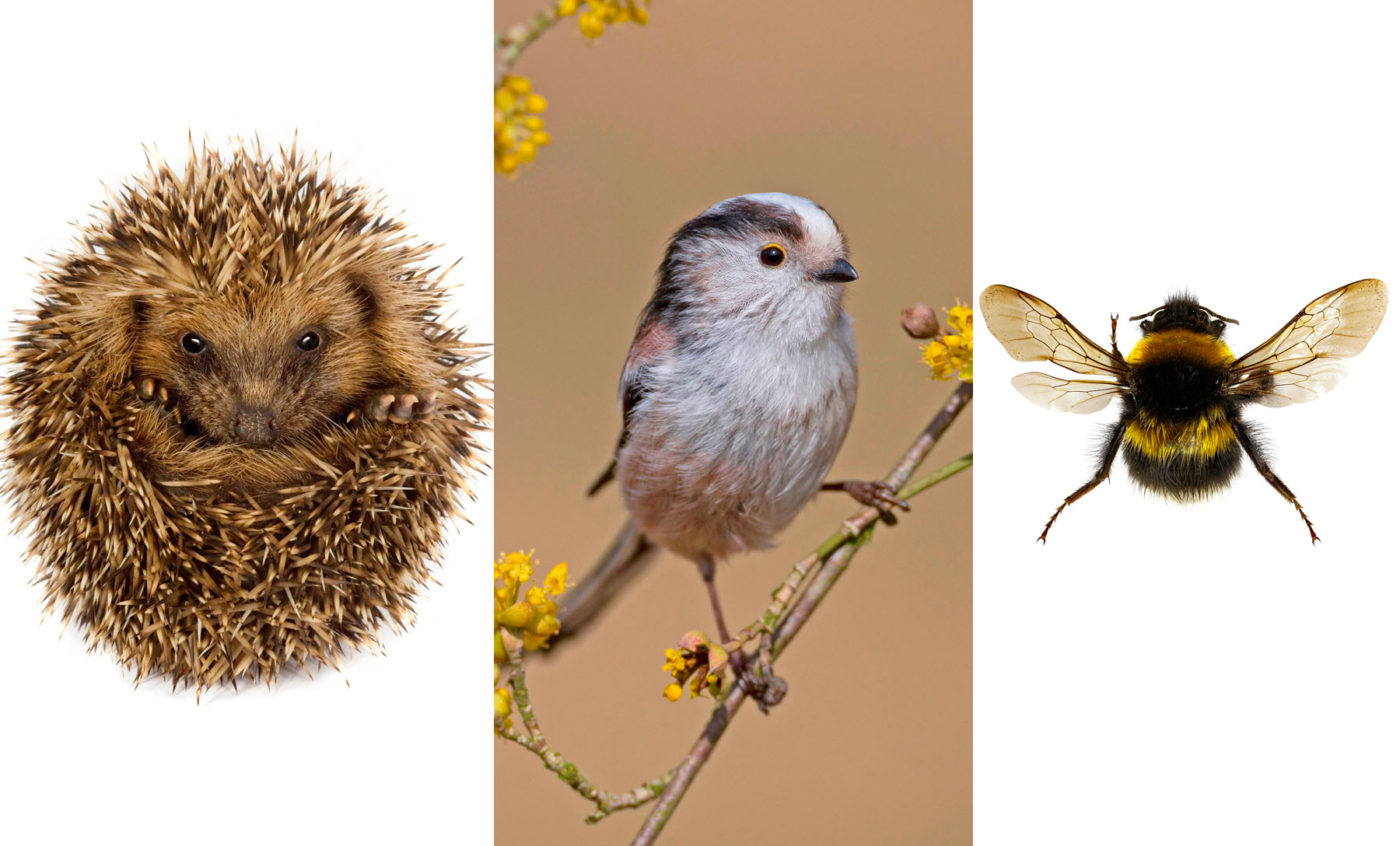Keeping goats: Cheap, simple — and they'll be your friend for life (as long as you don't mind the odd demolished wall)
The delightful and versatile English goat is making a deserved comeback, as Julie Harding learns from devotees. Photographs by Daniel Gould.


Six things you need to know about keeping goats
1. Ensure that your goat is well handled from a young age and it will be your friend for life, responding to its name and greeting you with a friendly bleat
2. They’re cheap to keep, requiring little hard feed unless you wish to boost milk yield or have growing kids. Anyone with limited land will need to buy in hay, but, otherwise, they will forage naturally (they like thistles and brambles) and their dainty build and browsing habit make them excellent conservation grazers
3. Their milk can be drunk or processed into cheese, butter, ice cream, yoghurt or even candles and soap (renowned for problem skin)
4. The British climate suits them — yes, even wind, rain and snow — but a basic shelter is needed
5. They tend to give birth easily and rarely require intervention
6. They will cheer you up and make you laugh, even if they’ve devastated the shrubbery and demolished a wall

There is English tea, (full) English breakfast, the English language, an English summer (sometimes disappointing) and English mustard. Less well known, but equally as much fun, is the English goat, as Johanna Tavernor, secretary of the English Goat Breeders Association (EGBA), firmly believes.
Exquisite houses, the beauty of Nature, and how to get the most from your life, straight to your inbox.
‘My kids use me as a climbing frame,’ she says. ‘If I open the back door, my goats will come into the house and my billy, Millwind Gambit, once got totally stuck in the hay rack and had to be extracted by my husband.’
GSOH apart, the deer-like, eel-striped English goat has great presence and its ears stand to attention as if part of a military parade. With so many striking physical attributes, coupled with intelligence, politeness and curiosity, it is small wonder that this rare breed is on the up.
I screamed aarrgh in frustration and he gave the longest blaahh straight back
Similar specimens became rosette machines in late-19th-century show rings — Henry Stephen Holmes Pegler, who wrote The Book of the Goat, is pictured with one in 1872 — but fast forward several decades and numbers have plummeted.
The first EGBA folded through lack of interest and the last registered herd was disbanded in 1952. However, the English goat continues on the roller coaster of existence: from teetering on the edge of extinction, the past few years have seen such a surge in popularity that breeders have been forced to run waiting lists of pure-bred offspring for hopeful buyers.

What flipped the fortunes of this particular breed of Capra aegagrus hircus? For a start, the English goat (not to be confused with the more diminutive and cobby Old English goat, another native breed whose numbers are worryingly low) has been taken under the wing of the Rare Breeds Survival Trust (RBST) and placed on its 2021 Watchlist in the Priority category, instantly guaranteeing a spotlight to illuminate its plight. As the EGBA became ever more proactive, ‘good lifers’ continued to seek out at-risk breeds such as this to graze their limited parcels of land.
‘English goats are perfect for smallholders. They’re easy to handle, children can take them to the field, they milk without fuss and they’re friendly,’ enthuses Mrs Tavernor, a horticultural consultant who began keeping English goats on her six-acre Suffolk holding in 2012, after spotting them on a friend’s farm.
‘I walked into her field and they came up to say hello and then followed me around like a dog.’ She subsequently purchased two female kids, Bianca and Bonita. ‘To my eternal regret, for the first five years I had English goats, I didn’t breed pure kids. I basically had no idea how rare they were then. I now lecture on the importance of breeding pure offspring,’ explains Mrs Tavernor, adding that the RBST and EGBA are now working together to increase the gene pool and reduce inbreeding.
Anna Lunt’s two foundation nannies, Belle of Grafton [Belle] and Agate of Grafton [Agatha], provided her and husband Simon with a frequently repeated dinner-party anecdote. ‘During a tussle, Agatha got a horn caught in Belle’s leather collar,’ Mrs Lunt relates.
‘It ended up twisting so that the collar became like a tourniquet, getting ever tighter until Belle collapsed. Hearing a racket, we dashed out, Simon cut the collar, cupped his hands around Belle’s mouth and resuscitated her. Eventually, she got to her feet unsteadily, and she lived to tell the tale.’
Mrs Lunt stumbled across a picture of an English goat online in 2009 and decided that she had to have some. ‘They looked so striking with their stripes. But then I couldn’t find any for love nor money.’ By chance, she met a social worker who had rescued a pregnant nanny after a family break-up, and Mrs Lunt purchased the resulting kids. ‘Before I kept goats, a breeder advised me to start with kids to experience all the growth stages. They also bond better with you. Adult goats can be more judgemental if they’re moved to a new home, and you have to earn their respect.’
Today Mrs Lunt, who milks and breeds from her nannies, has a herd of 17 that lives in her Herefordshire orchard (where they graze in electric-fenced lanes to prevent them damaging the apple trees).
Initially, she kept a few in her back garden and would take them out on a collar and lead to forage nearby verges. ‘Once the numbers grew, that wasn’t practical, so I would cut the foliage and feed it to them. We’ve had relatively few escapees and they never go far. It’s almost a given, too, that they will get into the neighbour’s garden!’
Andrea Parry-Jones, the RBST’s farm-park project officer, who keeps five English goats, has been researching breeding and her feeling is that the future looks distinctly bright for the breed, which saw 64 animals registered in 2020 (compared with 34 in 2019 and an average of only 28 in the preceding five years).
There are 10 new herd prefixes and 20 herds are actively breeding (against 16 in 2019). ‘Numbers are expanding, as is geographical spread, leading to more diversity and security,’ she observes.

‘For those looking for a hardy dairy goat with a good feed-conversion ratio, who don’t need the bigger milk yields of the [more commercial, Swiss-originating] Saanen, look no further than the English. They have nice personalities and are trainable, which is so important if you’re going to milk them.’
A further positive is a near doubling of the membership of the EGBA, to 80. Perthshire-based member Donnie Broad, who owns the Pitilie herd, can trump most other English goat stories. Last winter, he decided to repair the electrics in his goats’ shed, but, as he worked, the cable started to inch away. ‘I shouted, whereupon it disappeared like lightning and [the billy] Drumlin walked in with it attached to his horns.’
New cable was rethreaded and tools safely stored on top of the rafters, but: ‘Drumlin put his front legs on the wall next to me, stretched up his neck, plucked my Phillips screwdriver from the rafter and shot out of the door with it in his mouth.’ Setting off in hot pursuit, Mr Broad ‘went sprawling across the concrete, which was well lubricated with droppings’.
The final straw was when Drumlin, front feet on the wall once again, ‘tapped the tip of his horn onto the base of the drill on the rafter, knocking it into the water butt below. I screamed aarrgh in frustration and he gave the longest blaahh straight back. I couldn’t help but laugh at the absurdity’. Get an English goat, and life will probably never be quite the same again.
English Goat Breeders Association; Rare Breeds Survival Trust

Credit: Alamy
The true meaning of Dumbledore, Chiggypig, Hornywink and Lang lugs, and the other old English animal names all but lost to us
The colourful and beautiful archaic names given to the animals and birds of Britain are in danger of being lost
Country Life is unlike any other magazine: the only glossy weekly on the newsstand and the only magazine that has been guest-edited by His Majesty The King not once, but twice. It is a celebration of modern rural life and all its diverse joys and pleasures — that was first published in Queen Victoria's Diamond Jubilee year. Our eclectic mixture of witty and informative content — from the most up-to-date property news and commentary and a coveted glimpse inside some of the UK's best houses and gardens, to gardening, the arts and interior design, written by experts in their field — still cannot be found in print or online, anywhere else.
